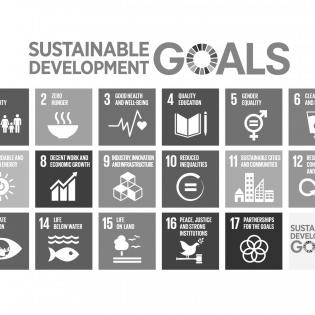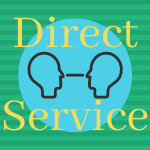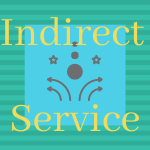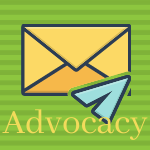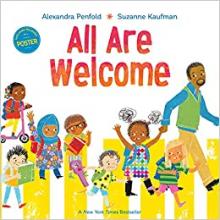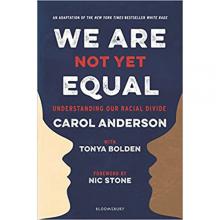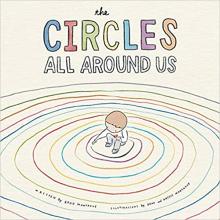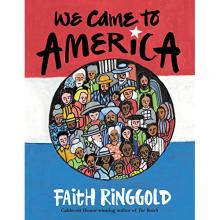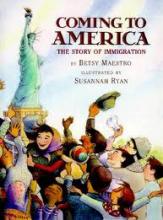Global Issues and Goals
This toolkit guides youth, educators, group leaders, families, and community groups as they investigate the issue of global issues and prepare to take action.
Contents:
- Definitions
- Key questions
- Background
- Lessons and activities
- Resources in your community
- Project ideas and guide to service-learning
- Quotes
Global Issues
We are all connected in a global community, and the United Nations' Sustainable Development Goals (SDGs) call us to action to make a better future for everyone. In order to be successful in reaching these goals, all citizens need to be aware of what the issues are and ways to take action. It can be motivating to know we are part of something bigger.
“Never doubt that a small group of thoughtful committed citizens can change the world; indeed, it's the only thing that ever has.” – Margaret Mead
Share this story from the World's Largest Lesson.
In 2015, the U.N. General Assembly celebrated the event of 193 member countries adopting the new Sustainable Development Goals. Leaders from all over the world gathered and shared their committment. There are three main categories of the 17 goals:
- End poverty
- Fight inequality and injustice
- Tackle climate change
Malala introducing the The Worlds Largest Lesson from World's Largest Lesson on Vimeo.
Watch the following three-minute video for an overview of the Goals.
Can you imagine a world where we achieve the goals by 2030?
The leaders of 193 countries agreed that we need action from everyone everywhere, including all nations and all people within those nations. The SDGs serve as a guide, a to-do list, and a blueprint for success.
The universal agenda is important to all countries because poverty and inequality exist in all countries.
Definitions and Key Questions
See the handout below for Vocabulary and Key Questions related to global issues.
Definitions:
As young people build knowledge and passion for taking action, they can look up vocabulary and read more about the issues and needs. Here are some of the relevant vocabulary words.
- global
- universal
- common good
- sustainable
- nation
Key Questions for Learning and Service:
These key questions may guide investigation or generate inquiry about other areas of interest. The best service-learning experiences follow the passions of youth and local concerns. Here are some sample questions:
- What are some things we all have in common in the country? In the world?
- How can we make change happen when habits have made things the way they are?
- Be aware of power dynamics. What types of power do you notice around you? Do people act differently around others who have more or less power?
- What are the issues you care about that affect people universally around the world? What would you like to learn more about?
- What issues have you noticed in your school, neighborhood, state, or country? What efforts have you seen to make the issue better?
Background Information
Share these background resources to inspire and inform youth about the global issues.
- Read more about the Sustainable Development Goals on this website.
- Rethinking Zero is a video about a world free from hunger.
- Amnesty International is dedicated to ending abuses of human rights all over the world. Youth can view issues by country, learn more about the justice that AI has achieved, and there are many ways to get involved.
- Ashoka is dedicated to recognizing and connecting social entrepreneurs. There are dozens of profiles of individuals that are doing amazing work all over the world. This would be an excellent resource for a research project on global issues.
- Do Something provides background information on a variety of issues that interest youth, as well as ideas for taking action to promote resolution for issues.
- ePals connects youth with other youth around the world as virtual pen pals.
- UNHCR- The UN Refugee Agency provides infographics and statistics related to refugees. The staggering numbers would help youth gain more perspective on the issues.
- UNICEF is dedicated to helping all of the world's children have a fair chance at success. They have programs dedicated to health, protection, education, gender equality and much more. This is an excellent resource for research.
Lesson Plans
Learning to Give has hundreds of lesson plans to inspire and inform youth action. Search our related lesson plans for topics that fit your interests and age of your kids. Narrow your search with keywords like refugees, global, international, or the group you want to serve. Here are some sample lesson plans:
- Cultural Competence - In these lessons, youth examine what it means to be culturally competent in today's society. They gain awareness of the richness of cultures in the world and respect for diverse people. With a vision of building a life of generosity and community engagement, these activities engage youth in taking personal responsibility for the good of all through words, intentions, and actions.
- Global Issues - Youth read an old quote about the interconnection of all life on the planet and recognize that we are each affected by what happens to others and the environment. In this lesson they survey the news for current issues affecting all.
- Welcoming Refugees through Service-Learning - Students investigate, plan, and facilitate a service-learning project that benefits refugees in their community.
Community Resources
For meaningful service-learning projects with long-lasting impact, connect youth to people and nonprofit organizations in the local community related to their service area of interest. This is an opportunity for a field trip (may be virtual) or for an expert to teach about issues and what is already being done. Youth may write, call, or interview experts about needs and partnerships.
- Faith organizations
- Food pantries
- Neighborhood organizations
- Local refugee organizations and families
- Universities and colleges
- UNICEF
- Amnesty International
- Community advocates
- Immigrant organizations and families
Project Ideas
There are four types of service. The ideas below are grouped by these types. The best service-learning experiences follow the passions of youth and local concerns. These are provided to start conversations and ideas.
This overview Guide for Planning Service-Learning describes each step of the process and actions to take.
This blank chart for Planning Service-Learning helps youth prepare for who does what for maximum service and learning impact
- Volunteer to meet with refugee children in the local community - help with school, skills, and making friends.
- Find and write to international pen pals to learn firsthand about global issues.
- Organize a collection drive to donate books, clothing, personal hygiene items, school supplies, or other necessities for children who are new to the country. Ask a local agency about their needs.
- Adopt a Sustainable Development Goal. The United Nations outlined 17 major issues that we as a world need to address over 15 years of attention and action. Which goal speaks to your heart? Learn about the issue, plan action, and get others involved.
- Around the time of Halloween, have youth get involved with Trick-or-Treat for UNICEF.
- This We the People video suggests that youth create a video telling what they will do for one of the SDGs and share it with others. Link
- Create a presentation that explains a selected goal, its purpose, and things people can do to address it.
- Hold a community information night and invite experts to inform neighbors about refugee conflicts in the world.
- Write letters to politicians urging them to support policies which help refugees.
- Encourage families to buy from fair-trade and ethically minded companies that help various global causes. Bread for Life, Global Goods Partners, and National Geographic are good places to start.
- Do a poverty simulation so people can understand the issues.
- Conduct research in small groups about a single Goal. Link to research guide and another format
- Find partners in your community who will work with youth on global issues projects. Connecting with a community resource makes the project more meaningful and impactful. They can provide facts and opportunities.
- Research global poverty and the variety of ways people live and eat around the world.
- Watch documentaries about global poverty, access to education and justice in developing countries and discuss.
- Learn about microfinance and the opportunity to raise funds and donate to a small business. This mini-loan system helps individuals all over the world become more economically efficient. KIVA is an excellent resource to teach about this practice and how it's helping people.
Literature Guides
All Are Welcome Here literature guide includes before, during, and after-reading discussion questions. School is a community where diversity is celebrated and people of all backgrounds, abilities, and appearances are welcome. This book is a rhythmic colorful tour of the first day of school and all of the activities taking place.
We Are Not Yet Equal literature guide provides before, during, and after-reading discussion questions. Choose from activities and discussion questions to build understanding of the story of civil rights and race relations and what it means in the current world they are living.
Circles All Around Us literature guide provides before, during, and after-reading discussion questions. Choose from activities and discussion questions to explore the power of community and the difference we can make when we have the courage to open ourselves up to others.
We Came to America literature guide provides before, during, and after-reading discussion questions. Choose from activities and discussion questions to celebrate differences, learn about immigration, and appreciate the different ways people come to America.
Teach Us Your Name literature guide provides before, during, and after-reading discussion questions. Choose from activities and discussion questions to build children's understanding of themselves and diverse others. The book features a muslim child with a name that is difficult to pronounce.
Coming to America literature guide provides before, during, and after-reading discussion questions. This book documents the history of America through the lens of immigration, from the very first nomad settlers to the closure of Ellis Island in 1954. Children learn about the difficulties that these people faced in the hopes of finding a better life for themselves. Most importantly, they come to understand that the contributions of immigrants to the United States throughout history are immense.
Quotes
Ways to use quotes with youth: Use it to spark conversation. Write about its meaning or do research on the person or topic. Represent the quote visually and display in social media. Tell whether you agree or disagree with the quote. Rewrite it to speak for you.
"The fight is not just being able to keep breathing. The fight is actually to be able to walk down the street with your head held high — and feel like I belong here, or I deserve to be here, or I just have [a] right to have a level of dignity." — Alicia Garza
"You can't separate peace from freedom because no one can be at peace unless he has his freedom." ― Malcolm X
“If you are neutral in situations of injustice, you have chosen the side of the oppressor.” ― Desmond Tutu
"There is a common tendency to ignore the poor or to develop some rationalisation for the good fortune of the fortunate." — John Kenneth Galbraith
"Where, after all, do universal human rights begin? In small places close to home...Such are the places where every man, woman, and child seeks equal justice, equal opportunity, equal dignity, without discrimination." — Eleanor Roosevelt
"Most of the things worth doing in the world have been declared impossible before they were done." — L. Brandeis
"If you come only to help me, you can go back home. But if you consider my struggle as part of your struggle for survival, then maybe we can work together." — an Aboriginal woman
